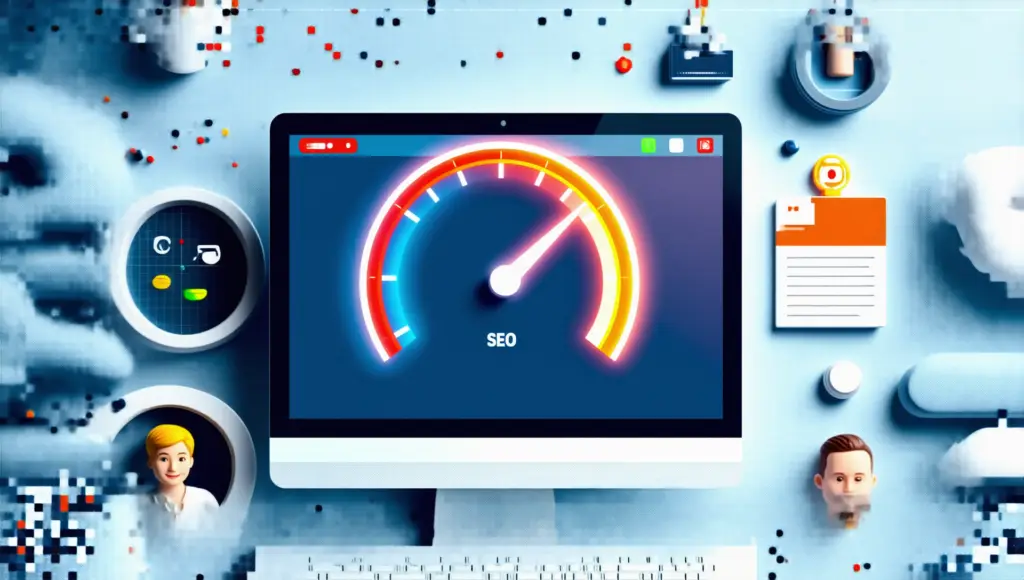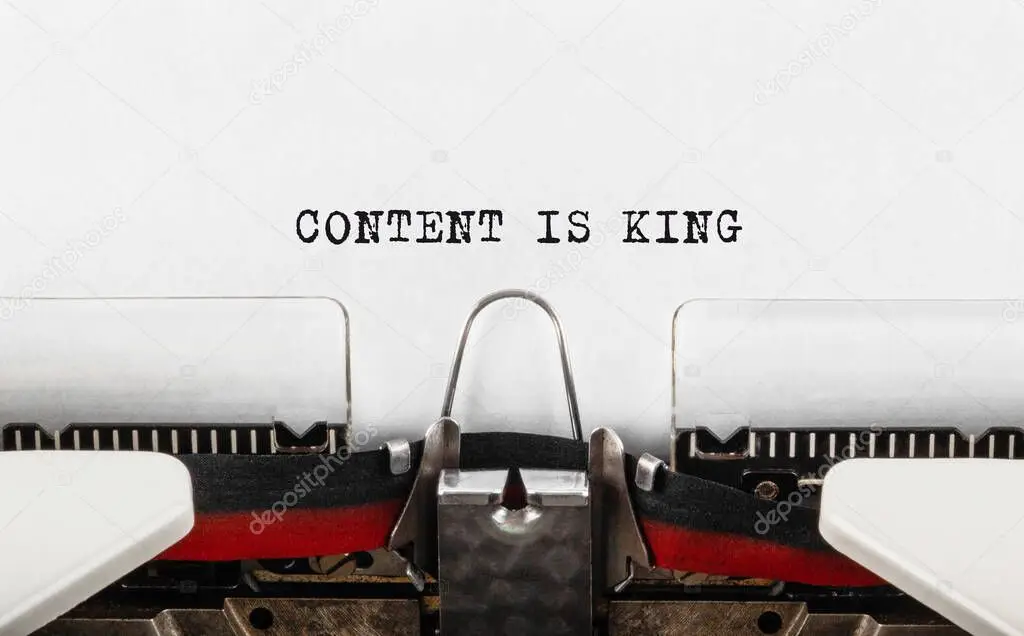
In an era where digital interactions are critical to business success, website speed is a crucial factor that directly impacts your brand’s online performance. A fast-loading website not only provides a seamless experience for users but also plays a pivotal role in search engine optimization (SEO). With consumers expecting near-instantaneous access to information, a slow website can mean lost opportunities, reduced customer satisfaction, and lower search engine rankings.
Let’s explore why website speed is essential for both SEO and user experience, and how optimizing load times can lead to better engagement, visibility, and business growth.
1. Why Website Speed Matters for SEO
When it comes to ranking websites, Google considers several factors, and website speed is one of the most important. A faster website enhances your chances of appearing at the top of search engine results, leading to more visibility and organic traffic.
Google’s Core Web Vitals and Page Experience Update
Google’s Core Web Vitals, introduced as part of its Page Experience update, measure critical aspects of user experience, including loading performance, interactivity, and visual stability. The Core Web Vitals include three primary metrics:
- Largest Contentful Paint (LCP): Measures loading performance. Google recommends an LCP of 2.5 seconds or less.
- First Input Delay (FID): Assesses interactivity. Google suggests an FID of less than 100 milliseconds.
- Cumulative Layout Shift (CLS): Evaluates visual stability, with an ideal CLS of less than 0.1.
Sites that perform well on these metrics are rewarded with higher rankings, while slower sites may struggle to rank competitively.
Lower Bounce Rates and Longer Dwell Time
Page speed directly affects bounce rates—the percentage of visitors who leave your site after viewing only one page. A slow-loading website can frustrate users, leading to higher bounce rates, which signals to search engines that your site isn’t meeting user expectations. In contrast, a fast website encourages visitors to stay longer, explore more pages, and engage with your content, leading to longer dwell times and improved SEO.
2. Enhancing User Experience with Fast Load Times
Website speed is essential for providing a smooth, enjoyable experience for users. Studies show that users expect a page to load in under three seconds, and if it takes any longer, they may abandon it. Speed affects how users perceive your brand, making it a vital factor in user experience (UX).
Improved Navigation and Engagement
A fast website allows users to quickly find what they’re looking for, leading to better navigation and higher engagement. Whether visitors are browsing product pages, reading blog posts, or checking out services, fast load times make interactions smoother and more enjoyable. Positive user experience increases the likelihood of conversions, whether that means making a purchase, signing up for a newsletter, or filling out a contact form.
Better Mobile Experience
With mobile devices accounting for more than half of all internet traffic, it’s essential for websites to load quickly on smartphones and tablets. Google uses mobile-first indexing, meaning it primarily uses the mobile version of a website to rank pages. A mobile-friendly, fast-loading website is crucial for delivering a positive experience on mobile devices, where load times can make or break a user’s experience.
3. The Impact of Website Speed on Conversion Rates
Website speed isn’t just about SEO and UX; it directly influences your business’s bottom line. Faster websites generally lead to higher conversion rates, as users are more likely to complete actions when they don’t have to wait.
Increased Sales and Reduced Cart Abandonment
For e-commerce websites, speed is particularly crucial. A delay of even a few seconds can lead to cart abandonment, as users grow impatient with slow-loading product pages or checkout forms. A fast-loading website provides a smoother shopping experience, encouraging customers to follow through with purchases and reducing the risk of abandoned carts.
Enhanced Trust and Brand Perception
A fast website reflects positively on your brand. Users associate speed with professionalism, reliability, and efficiency. Conversely, a slow website can make your brand appear outdated or unreliable, which can erode trust. By ensuring that your site loads quickly, you’re also investing in a strong, positive perception of your brand.
4. Factors That Affect Website Speed
To optimize your website’s speed, it’s important to understand the factors that can cause slow loading times. Addressing these issues can help you achieve optimal speed and performance.
Image Optimization
Images are one of the most significant contributors to slow load times. By compressing and resizing images, you can reduce their file size without compromising quality. Using modern image formats, such as WebP, can also help reduce loading times.
Browser Caching
Browser caching allows website elements to be stored in a user’s browser, so they don’t have to reload every time the user visits the site. By enabling caching, you can significantly reduce load times for returning visitors.
Minifying CSS, JavaScript, and HTML
Minifying code involves removing unnecessary characters, such as spaces and comments, from your CSS, JavaScript, and HTML files. This reduces file size and can speed up page load times. Additionally, loading scripts asynchronously allows important content to load first, further improving user experience.
Content Delivery Network (CDN)
A CDN distributes website content across multiple servers around the world, reducing the distance between the server and the user. This improves load times, especially for users accessing your site from different geographic locations.
5. Tips for Optimizing Website Speed
Improving your website’s speed is a worthwhile investment that can enhance both SEO and user experience. Here are some practical tips for optimizing your site’s performance.
Use a Reliable Hosting Provider
Choosing a reliable hosting provider is essential for website speed. Shared hosting may be cheaper, but it can lead to slower load times due to limited resources. Investing in a high-quality hosting provider, or opting for dedicated or VPS hosting, can provide the speed and reliability you need.
Enable Lazy Loading for Images and Videos
Lazy loading is a technique where images and videos only load as they enter the user’s viewport. This reduces initial load times, as only the content that’s visible to the user is loaded immediately. This is particularly useful for pages with multiple images or videos.
Optimize Plugins and Themes
Too many plugins or poorly coded themes can slow down your site. Regularly audit your plugins, remove any that are unnecessary, and make sure you’re using a lightweight theme. This can improve load times and reduce the risk of conflicts that could slow down your site.
Compress Files
Using file compression techniques, like Gzip, can reduce the size of your CSS, JavaScript, and HTML files, allowing them to load faster. Enabling compression is a simple but effective way to improve load times.
Monitor and Test Regularly
Website speed optimization is an ongoing process. Tools like Google PageSpeed Insights, GTmetrix, and Pingdom can provide valuable insights into your site’s performance and highlight areas for improvement. Regularly testing your website speed ensures you stay on top of any performance issues.
6. The Future of Website Speed and Digital Expectations
As digital technology advances, user expectations for website speed will only increase. Emerging technologies like 5G and fiber-optic internet are raising the bar, making it crucial for businesses to prioritize speed to remain competitive.
The Role of AI in Speed Optimization
Artificial intelligence (AI) is playing a growing role in website speed optimization. AI tools can analyze user behavior and dynamically adjust website elements for faster loading. For example, AI can determine which images or scripts are necessary for specific user actions, optimizing load times based on real-time usage.
Speed as a Competitive Advantage
In today’s digital landscape, a fast-loading website can provide a significant competitive advantage. Businesses that prioritize speed will not only improve their SEO and user experience but also attract and retain customers more effectively.
How AdElevate Can Help You Achieve Optimal Website Speed
Optimizing your website’s speed requires a combination of technical expertise, strategic planning, and ongoing monitoring. At AdElevate, we offer comprehensive web design and development services that include speed optimization to ensure your website performs at its best. With our team of experienced professionals, we help businesses enhance their online presence with fast, user-friendly websites that drive engagement and improve SEO.
Our approach is tailored to your business needs, focusing on best practices in speed optimization, mobile responsiveness, and user experience. Let us help you create a website that not only looks great but also loads quickly, providing an exceptional experience for your visitors. Ready to boost your website’s performance? Your Growth, Our Mission.


